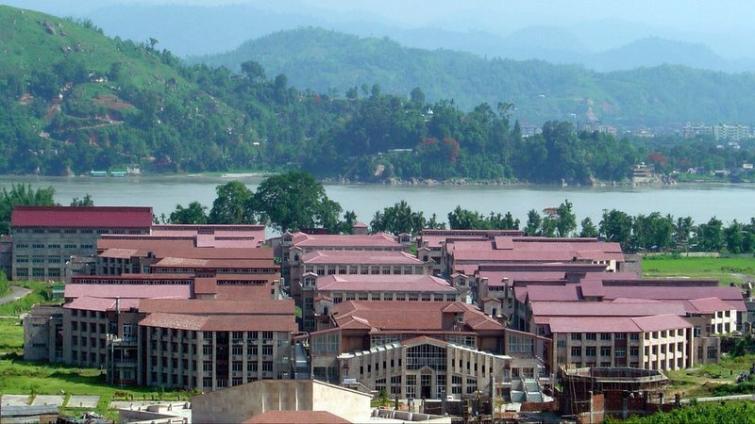 IIT Guwahati
IIT Guwahati
IIT Guwahati Researchers Developing cost-efficient materials to generate energy-rich hydrogen from water using Sunlight
Guwahati: Indian Institute of Technology Guwahati researchers are developing novel materials that can use sunlight to split water into hydrogen and oxygen. These materials are much cheaper than the ‘noble metals’ currently used and could lead to cost-effective solar-powered hydrogen generators.
Worldwide efforts in developing clean energy have been propelled by ever-increasing need for energy and dwindling and environmentally damaging nature of fossil fuels. Since the discovery of photovoltaic effect by Becquerel in 1839, conversion of solar energy into electrical power or chemical fuel has captured the interest and imagination of scientists. Solar energy is considered the most promising of the clean and renewable energy sources known today.
While the commonly known ‘solar cells’ convert light directly into electrical energy, there is another type of sunlight-powered energy conversion system called ‘PhotoElectroChemical’ (PEC) Cells that have elicited attention in recent times due to their direct production of fuels in combination of electrical energy.
PEC cells use solar energy to split simple and safe compounds such as water into hydrogen and oxygen, hydrogen being a high-energy fuel that can be stored and used as needed. These cells are therefore considered the ‘Holy Grail’ to a carbon-free hydrogen economy.
This is the area of Research for the team from the Department of Chemistry at IIT Guwahati led by Dr. Mohammad Qureshi (www.iitg.ac.in/mq). The team has reported their recent findings in the prestigious peer-reviewed journal of the American Chemical Society, Journal of Physical Chemistry Letters (https://doi.org/10.1021/acs.jpclett.1c02664). The paper has been co-authored by Prof. Mohammad Qureshi and Mr. Suhaib Alam.
Elaborating the importance of this research, Dr. Mohammad Qureshi, Professor, Department of Chemistry, IIT Guwahati, said, “Despite the promise, PEC cells are not yet a practical solution to the energy crisis because of the scientific bottlenecks such as the sluggishness of the water-oxidation process. Catalysts are used to activate the water-splitting process but these catalysts are expensive metals such as platinum, iridium and ruthenium, among others, which render the cells impractical.”
The team at IIT Guwahati has developed non-noble metal catalysts that are as good as the expensive metals in splitting water in PEC cells.
Explaining further, Professor Mohammad Qureshi said, “We have developed a ternary catalyst that comprises cobalt-tin layered-double hydroxides (LDH) and bismuth vanadate, which forms a p-n junction semiconductor with graphene bridges, and have shown that the catalyst, when used as a photoanode, is able to split water easily to produce hydrogen and oxygen.”
When light falls on the anode of a PEC cell, negatively charged electrons and positively charged holes are generated (excitons). In the absence of a catalyst, the thermodynamic barrier will be very high to overcome, hence cannot split the water into hydrogen and oxygen.
In order to split water, the holes must be prevented from recombining with the electrons, or in other words they should efficiency separate and get transported to the surface of the semiconductor. In the ternary catalyst system developed by the IIT Guwahati team, the bismuth vanadate generates electrons and holes in response to sunlight.
Graphene siphons the holes away from the vanadate and transports them into the cobalt-tin LDH, thus preventing their recombination with the electrons. The holes and the electrons are now available to split the water into hydrogen and oxygen.
The photocurrent density of the ternary photoanode is three-fold higher than when using the bismuth vanadate by itself because of the extraction and transportation of the holes by graphene. These researchers believe that their findings would help us understand the mechanism of hetero-structured photoanodes and inspire the design of cheaper photoelectrode systems for improved water oxidations.
The researchers are now in the process of developing a prototype device to test their photoanode in practical PEC cells.
Support Our Journalism
We cannot do without you.. your contribution supports unbiased journalism
IBNS is not driven by any ism- not wokeism, not racism, not skewed secularism, not hyper right-wing or left liberal ideals, nor by any hardline religious beliefs or hyper nationalism. We want to serve you good old objective news, as they are. We do not judge or preach. We let people decide for themselves. We only try to present factual and well-sourced news.







